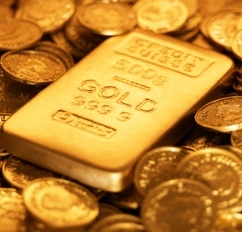Articles and News
Consumer Demand For Gold Hits All-Time High; Price Bounces Back February 19, 2014 (0 comments)

London, United Kingdom—Total gold demand was down in 2013, but consumers around the world bought gold in record amounts, led by demand in China and India, according to the latest World Gold Council Gold Demand Trends report. Although China became the world’s biggest gold market, the United States had a robust year for jewelry, bar, and coin sales, and consumer demand remained strong in other western markets as well. Notable growth markets include Turkey (up 60%), and Thailand (up 73%).
In 2013 the gold market saw 21% growth in demand from consumers. Annual global investment in bars and coins rose 28% to post the highest figure since the World Gold Council’s data series began in 1992. Demand for jewelry increased 17% globally, also reaching the highest annual figure since the onset of the financial crisis in 2008.
Said Marcus Grubb, managing director of investment strategy at the World Gold Council, “2013 has been a strong year for gold demand across sectors and geographies, with the exception of western ETF markets. Specifically, it was the year of the consumer. Although demand has continued its shift from West to East, the growing demand for gold bars, coins and jewelry is a global phenomenon.”
So why is overall demand for gold down 15% in 2013 over 2012? Simple. Central banks lowered demand by 32% over 2012 figures, and there was a net outflow of gold ETFs. Investors redeemed 881 tons over the course of the year.
Gold is largely an investment metal, with relatively little industrial use compared to both silver and platinum. Demand for its use in technology, the key component of industrial use, remained flat with 2012.
Return of the bull market? The average price of gold for 2013 was US $1,411 the ounce, down 15% on 2012. By the end of 2013, gold had dropped to $1,205 an ounce, but at press time it had rebounded to $1324, about a 10% recovery in price, trading on a weaker U.S. dollar. But Jim Wyckoff of Kitco.com believes raw commodities are due for a rebound, and that such a rebound might also suggest that the U.S. stock market doesn’t have much more upside potential. If the stock market peaks and trends either sideways or down, he believes that would spur a bull market for precious metals. But other experts say gold and stocks move independently and any correlation—positive or negative—between the two markets is coincidental.
Top image: Financesonline.com.







